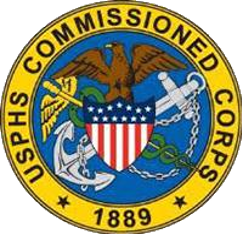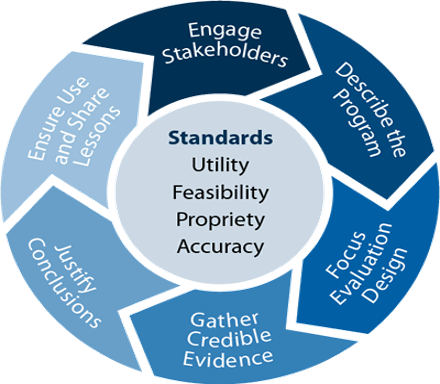
I’m Michael Quinn Patton director of Utilization-Focused Evaluation. I’m curating AEA365 in conjunction with the Memorial Day holiday in the USA which officially honors those who died in military service. It originated after the Civil War (1861-1865) in which 750,000 soldiers died and slavery was ended. It became an official federal holiday in 1971 and is commemorated by family gatherings, parades, and visiting cemeteries or memorials. The Coivid-19 epidemic has led to cancelation of most public events this Memorial Day.
The fight against the coronavirus has given rise war to war metaphors. A command center in that war is The Centers for Disease Control and Prevention (CDC) whose evaluation unit celebrated the 20th anniversary of its Evaluation Framework last year. Many of the officers in that war are members of the United States Public Health Service, which is a uniformed service.

The United States Public Health Service Commissioned Corps (PHSCC) is one of the eight uniformed services of the United States. The commissioned corps’ primary mission is to the protection, promotion, and advancement of health and safety of the general public. PHSCC is headed by the Surgeon General of the United States. Members of the service are all commissioned officers and wear the same uniforms as the US Navy or Coast Guard.
PHSCC began in 1871 as the Marine Hospital Service. Today it operates under the Department of Health and Human Services. Officers are trained and equipped to respond to public health crises and national emergencies, such as natural disasters, disease outbreaks, or terrorist attacks. In the 2014–2015 Ebola virus epidemic in Liberia, they established a field hospital there for health workers. They have been fully mobilized to support efforts to combat the Covid-19 pandemic.
Epidemic Intelligence Service (EIS)
The Coronavirus has also shined a spotlight on the Epidemic Intelligence Service, known within the Public Health Service as “America’s shock troops in combatting disease outbreaks.” The program has more than three thousand graduates, and many now work in state and local governments across the country.
EIS was founded in 1951, when American troops in Korea began experiencing fevers, aches, vomiting, and fatal hemorrhages. Some three thousand soldiers fell ill, leading military leaders to suspect weaponized bacteria. That suspicion proved false. But that scare led to creation of the Epidemic Intelligence Service, named to evoke the Central Intelligence Agency. Today it is on the front lines of the Covid-19 response.
The Military and Veteran Evaluation Topical Interest Group
The rest of this week will highlight posts from the Military and Veteran Evaluation TIG featuring contributions to evaluation with military origins but relevant to all we do.
Hot Tip:
I suspect you’ll be surprised by some of what you’ll learn in the posts this week.
Stay safe. Stay well. Stay sane. Stay ready to learn this week and every week.
Rad Resource: CDC Evaluation Framework

The American Evaluation Association is celebrating Memorial Week in Evaluation. The contributions this week are from members of the Military and Veteran Evaluation TIG featuring contributions to evaluation with military origins but relevant to all we do. Do you have questions, concerns, kudos, or content to extend this aea365 contribution? Please add them in the comments section for this post on the aea365 webpage so that we may enrich our community of practice. Would you like to submit an aea365 Tip? Please send a note of interest to aea365@eval.org . aea365 is sponsored by the American Evaluation Association and provides a Tip-a-Day by and for evaluators.
